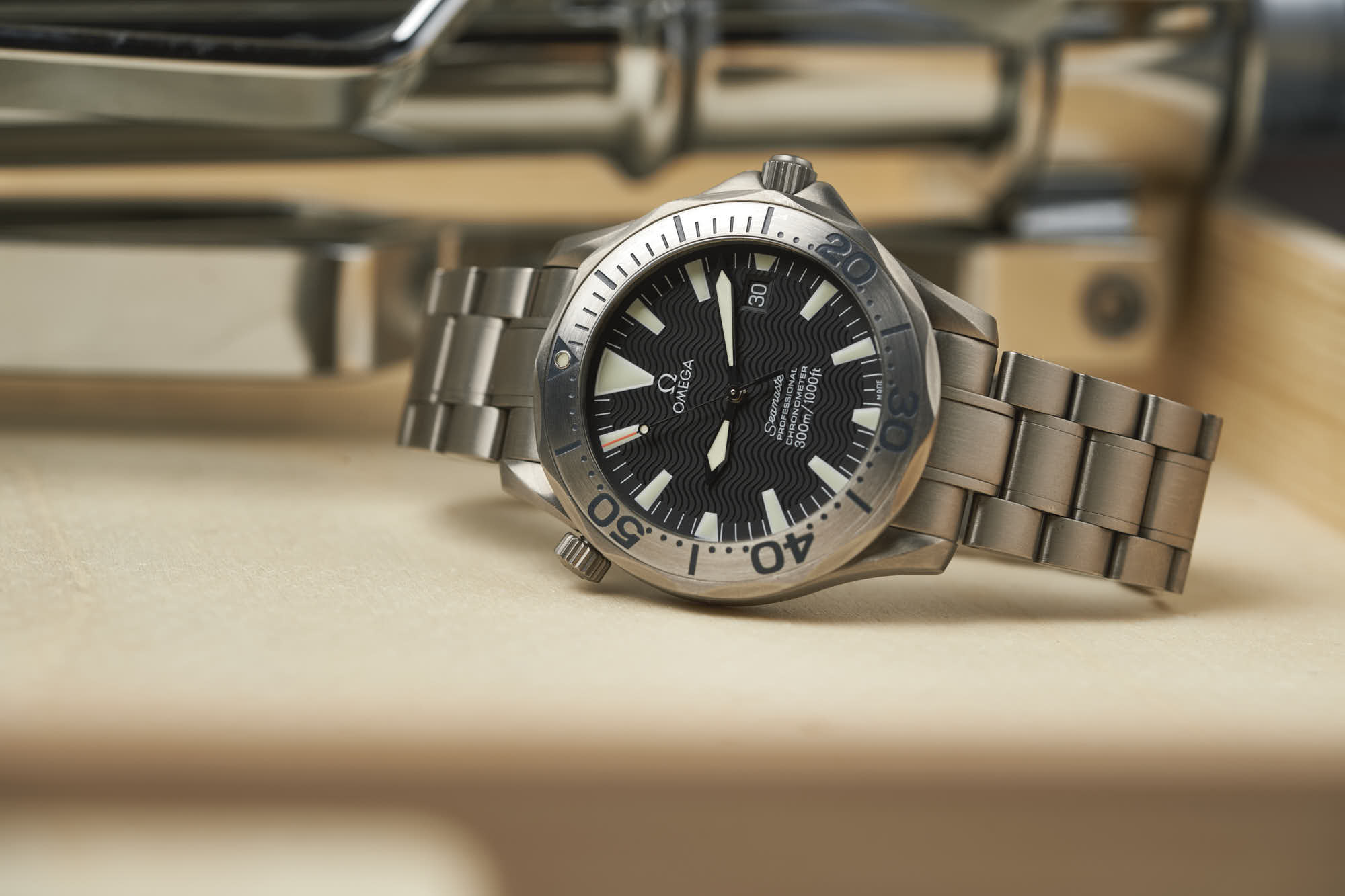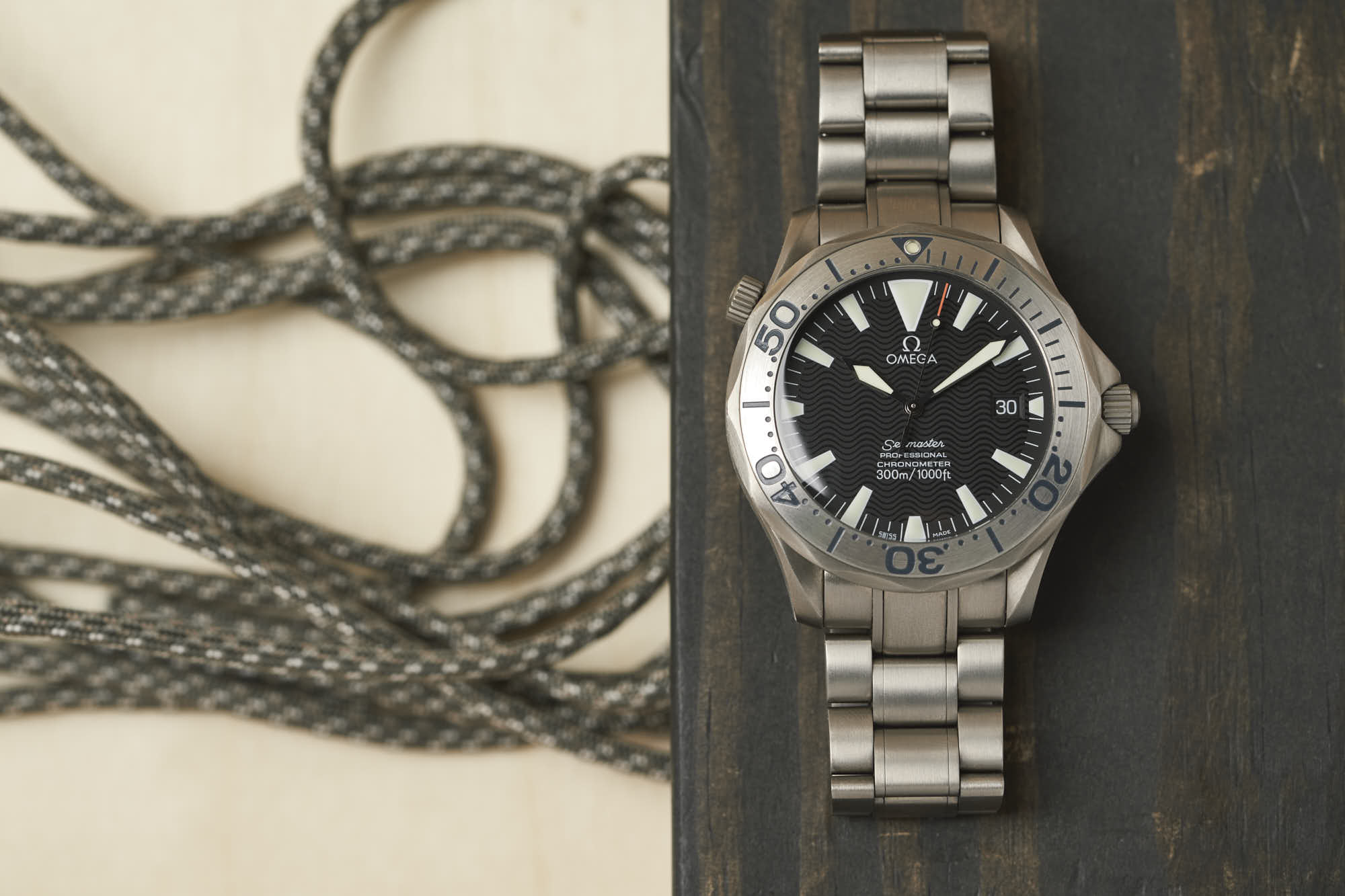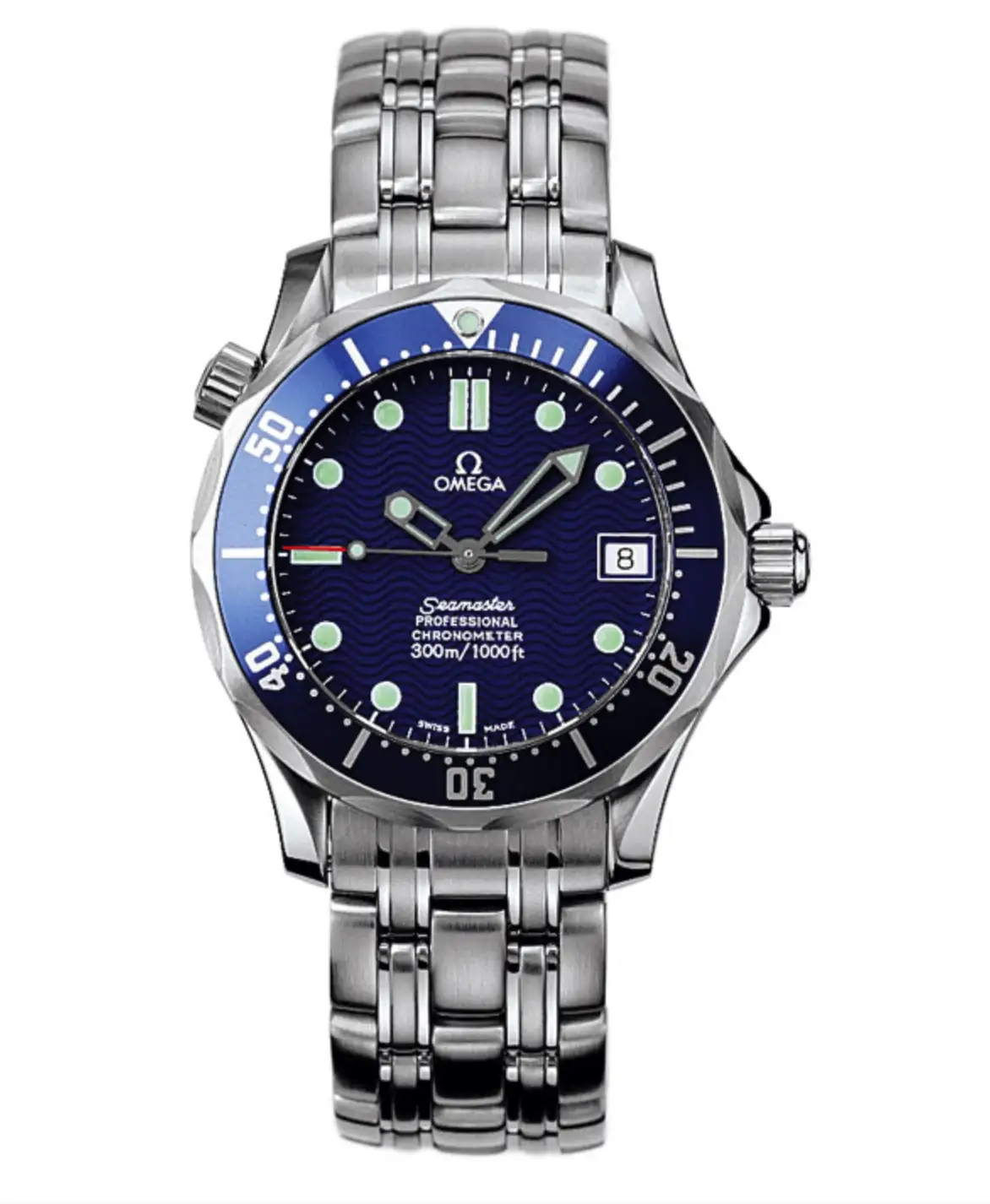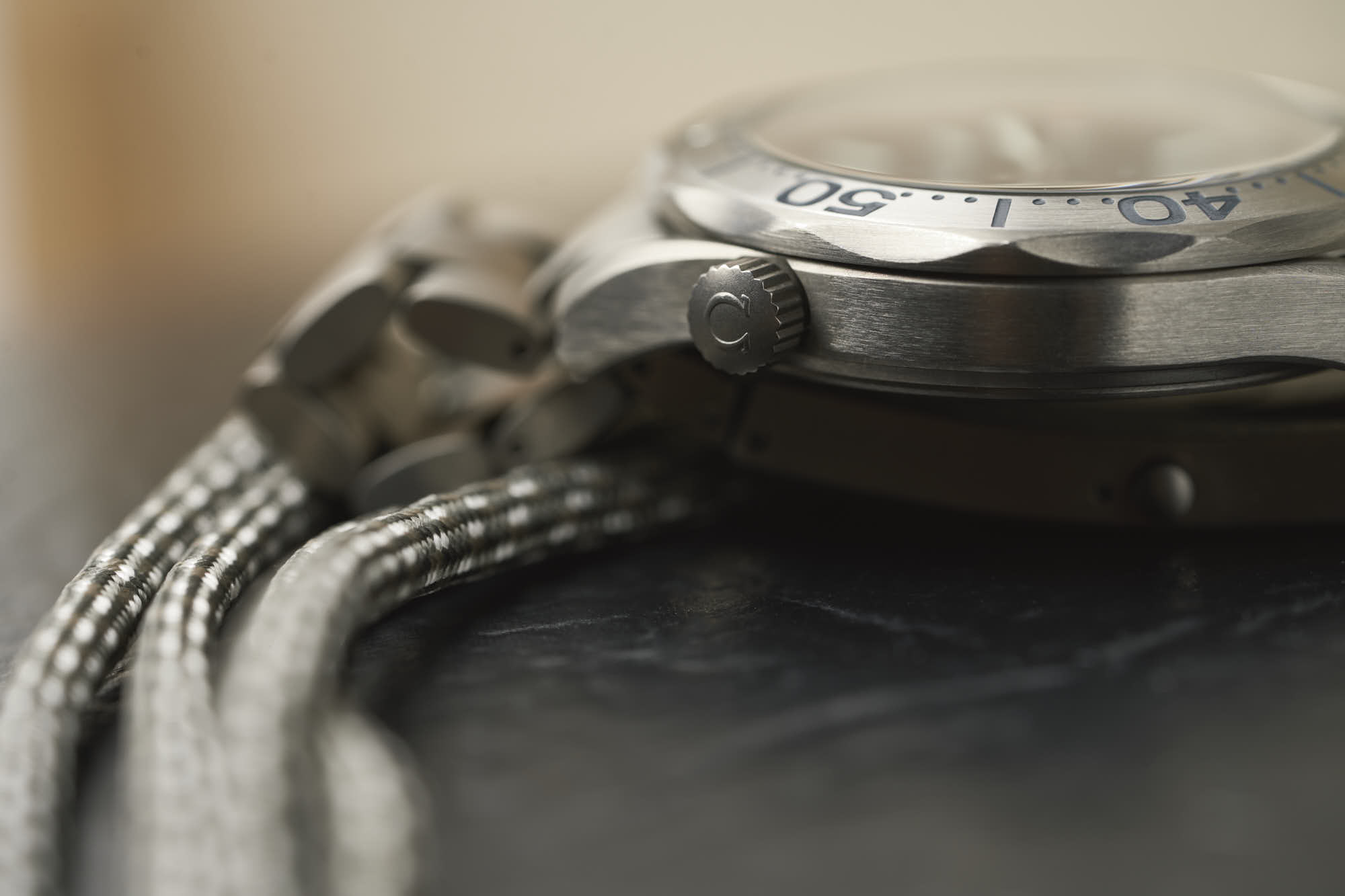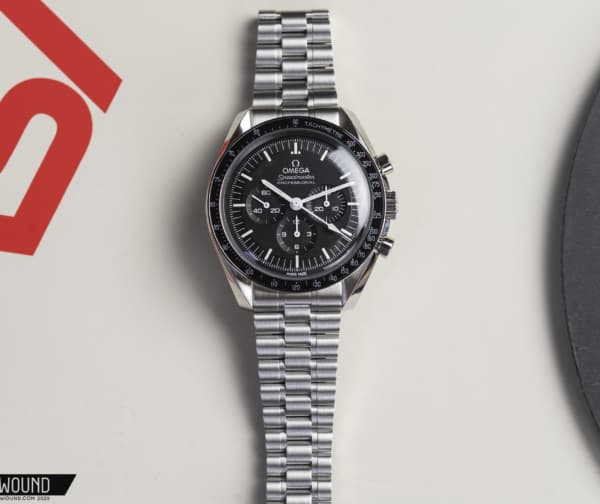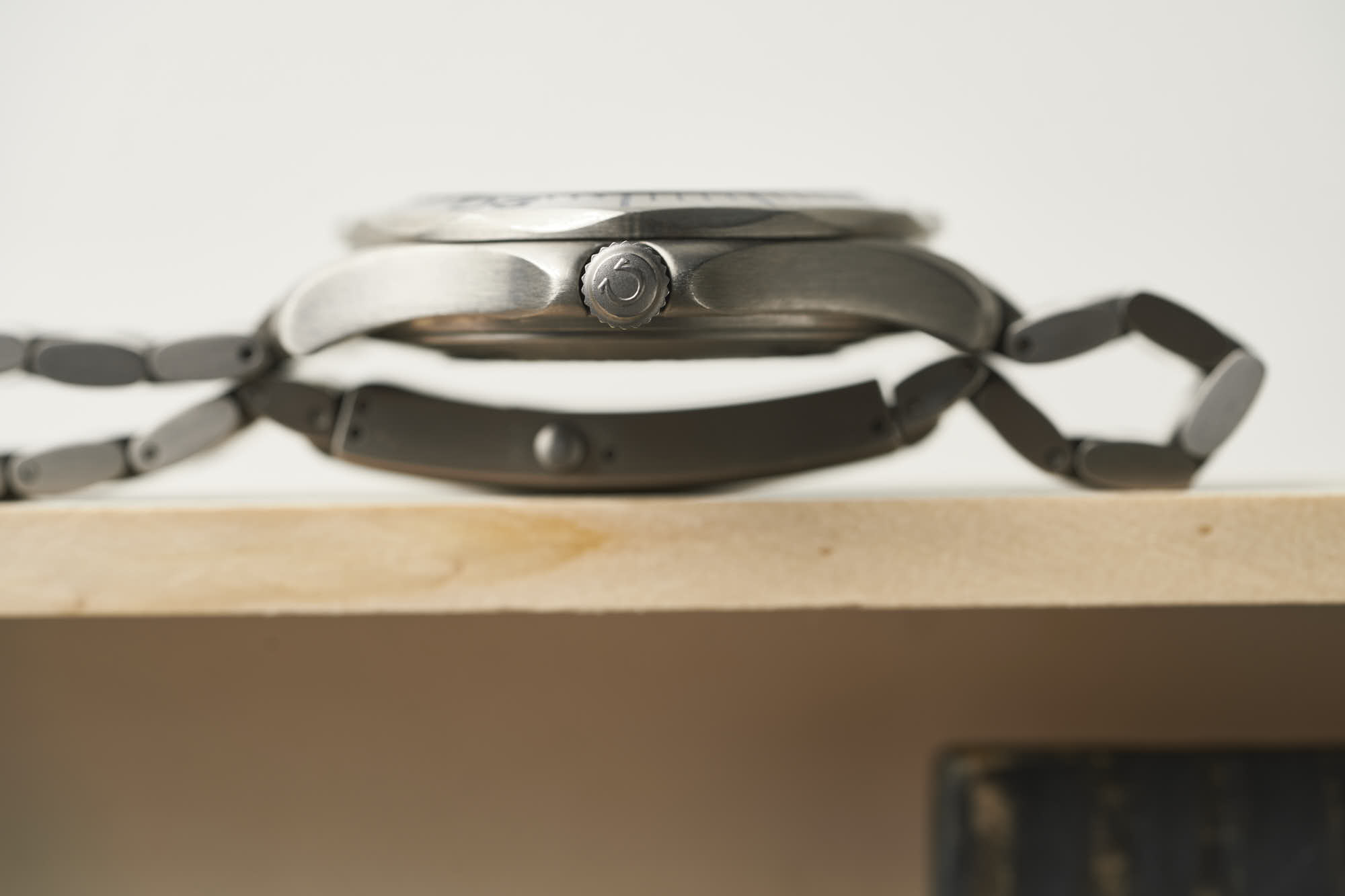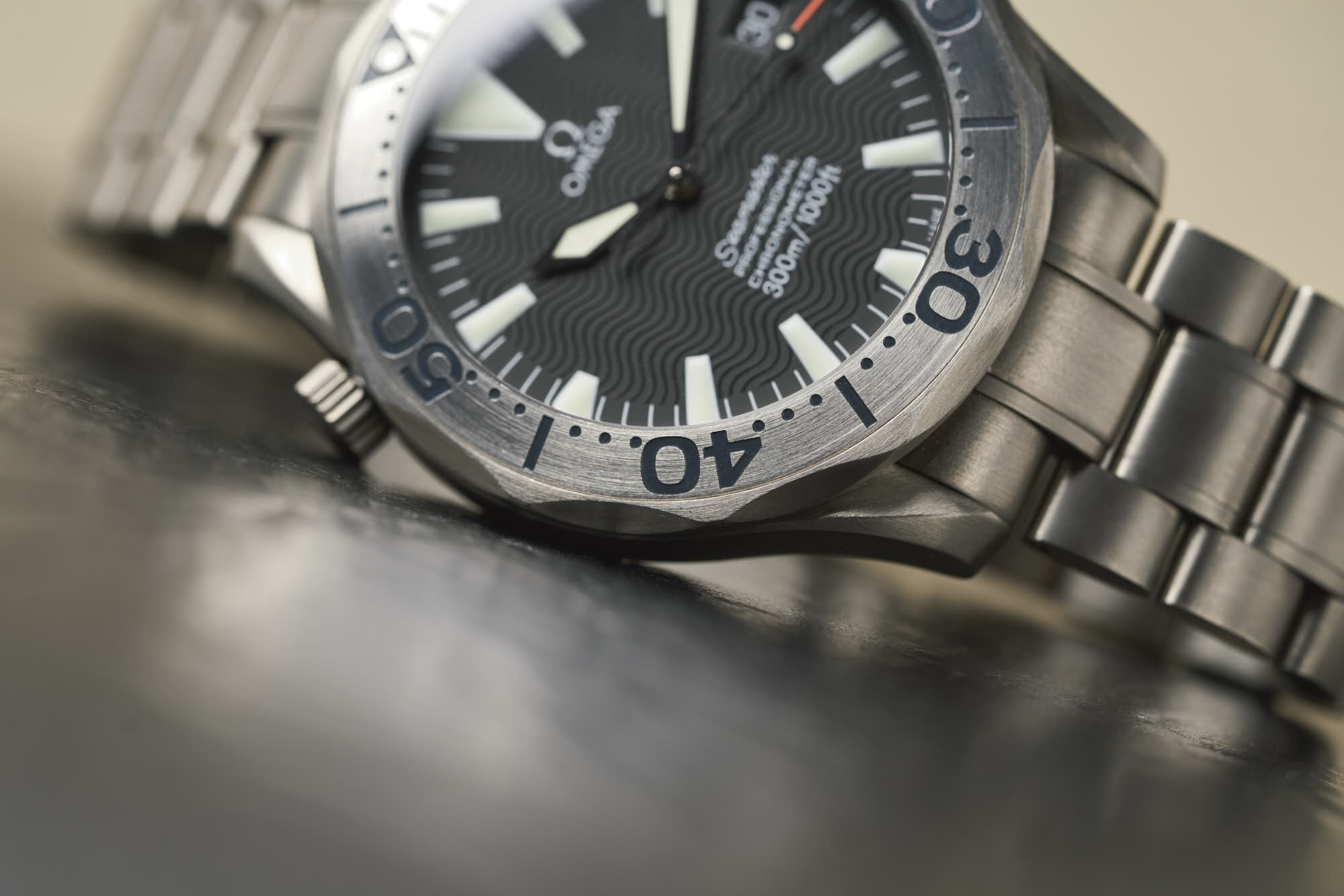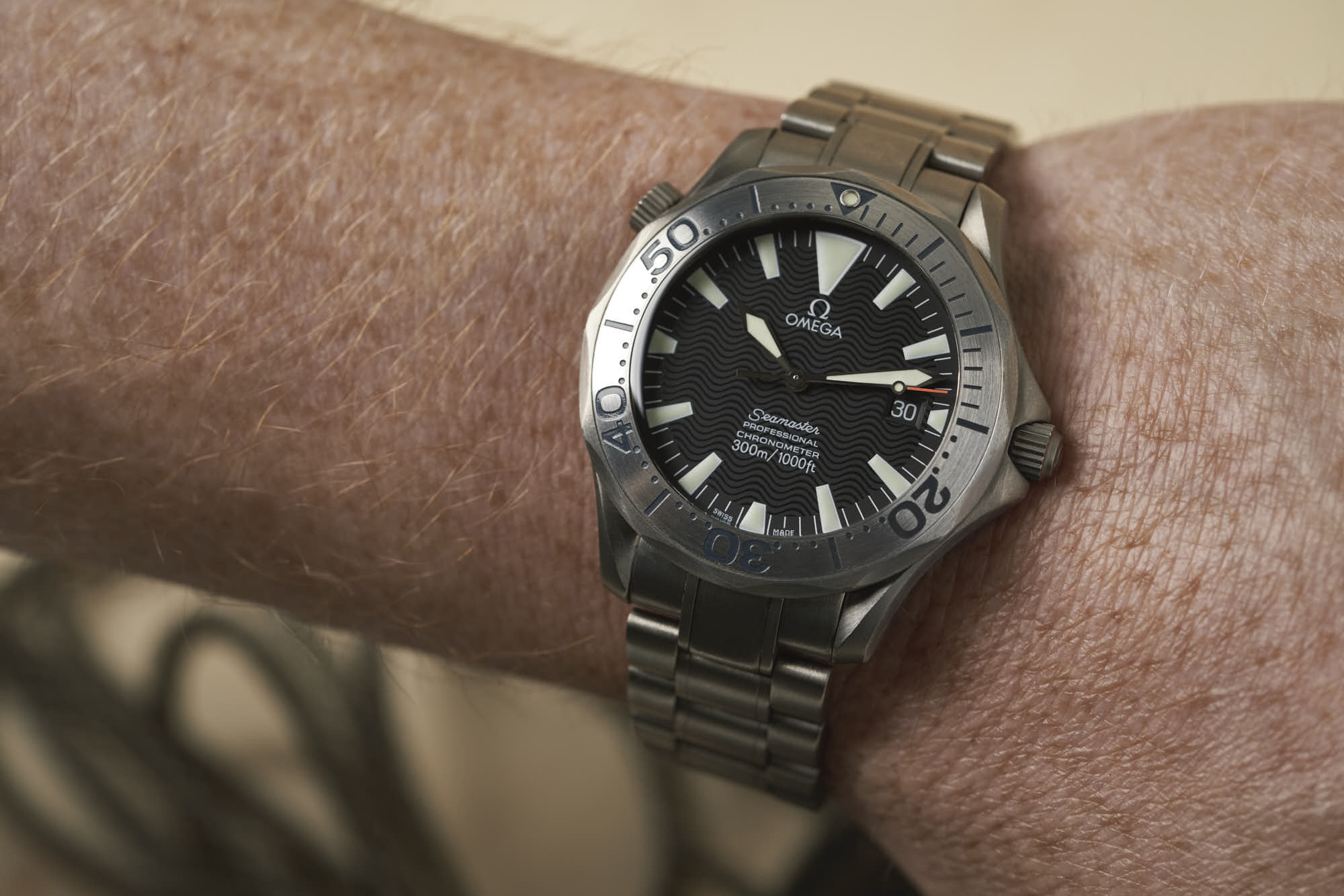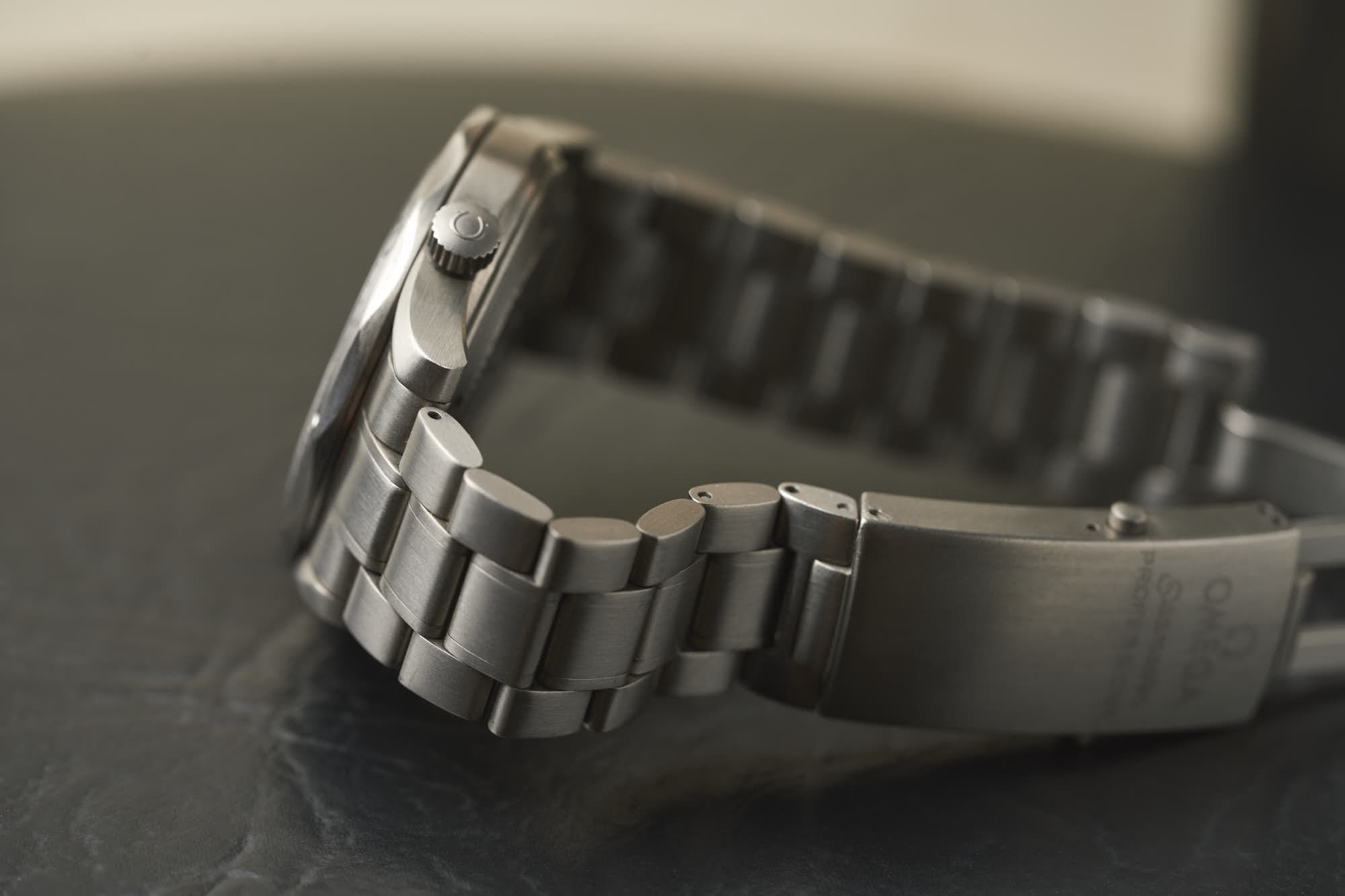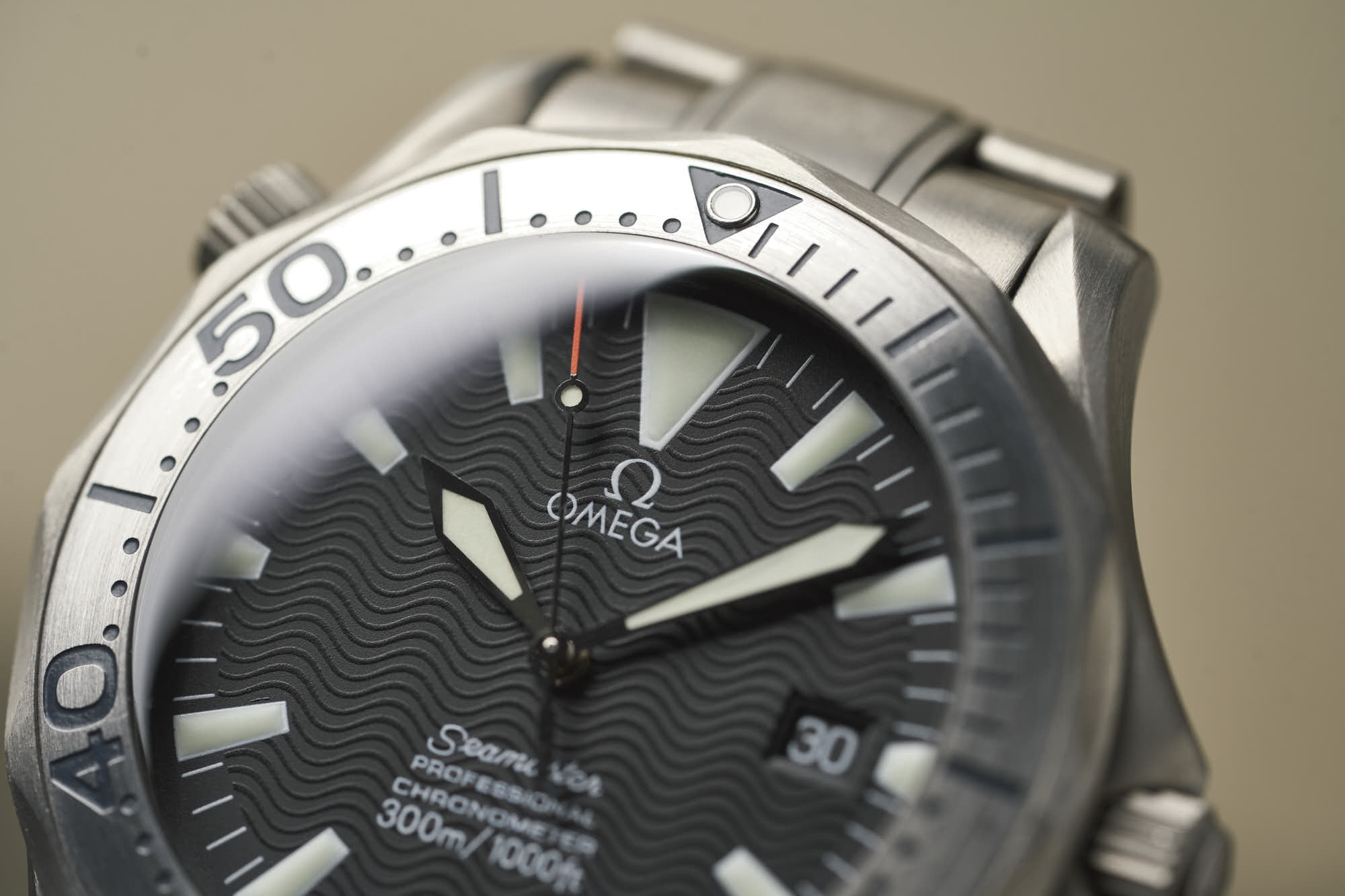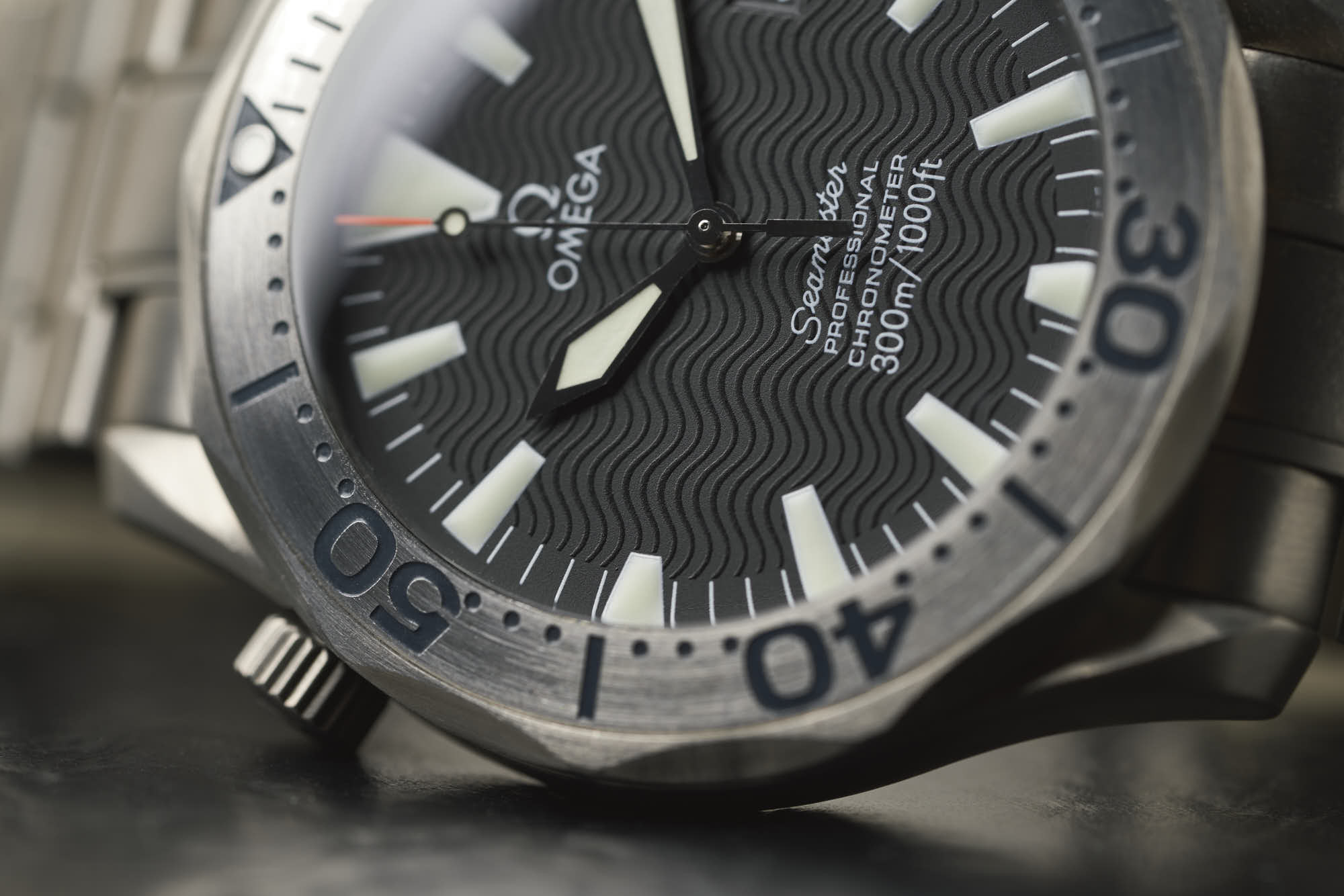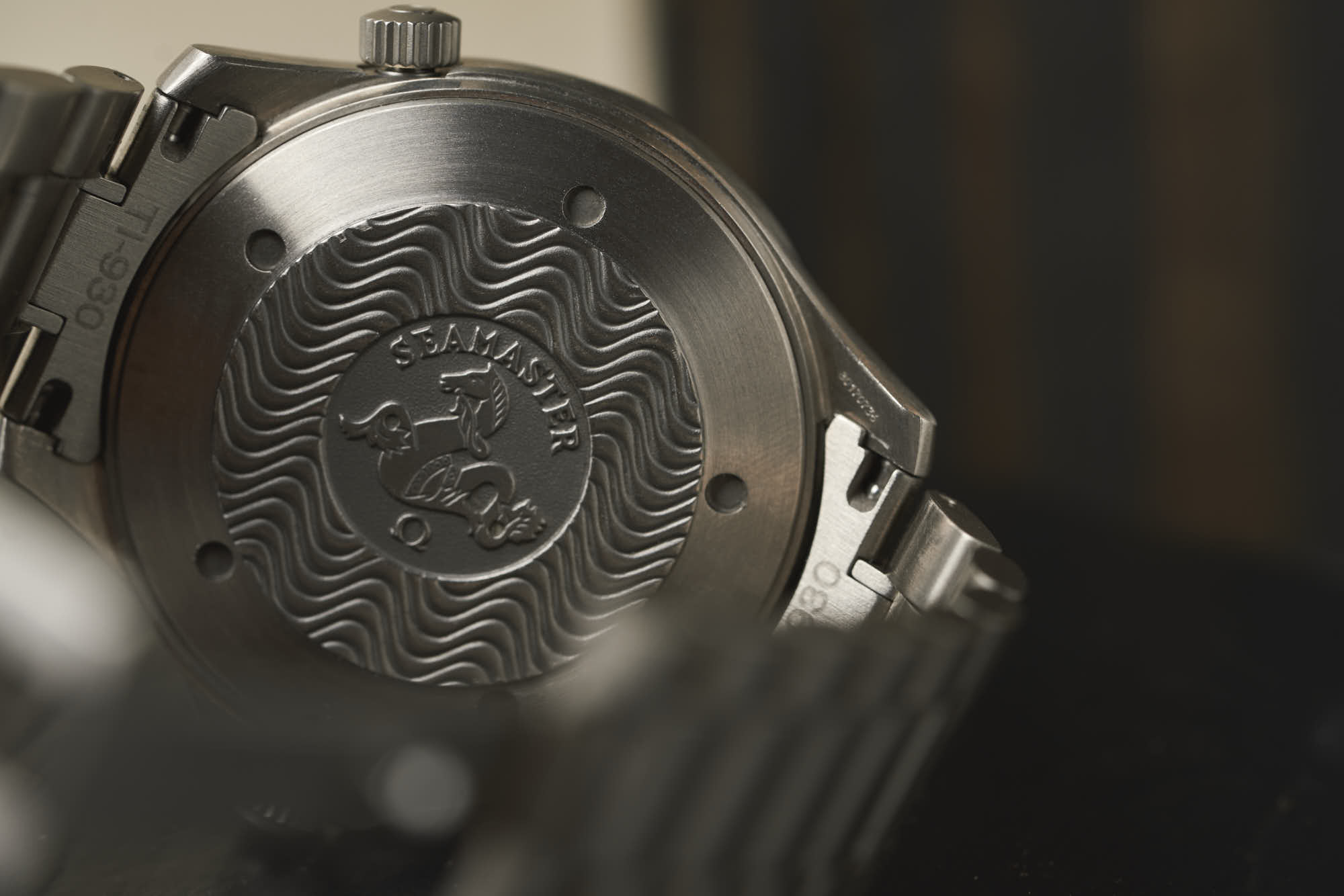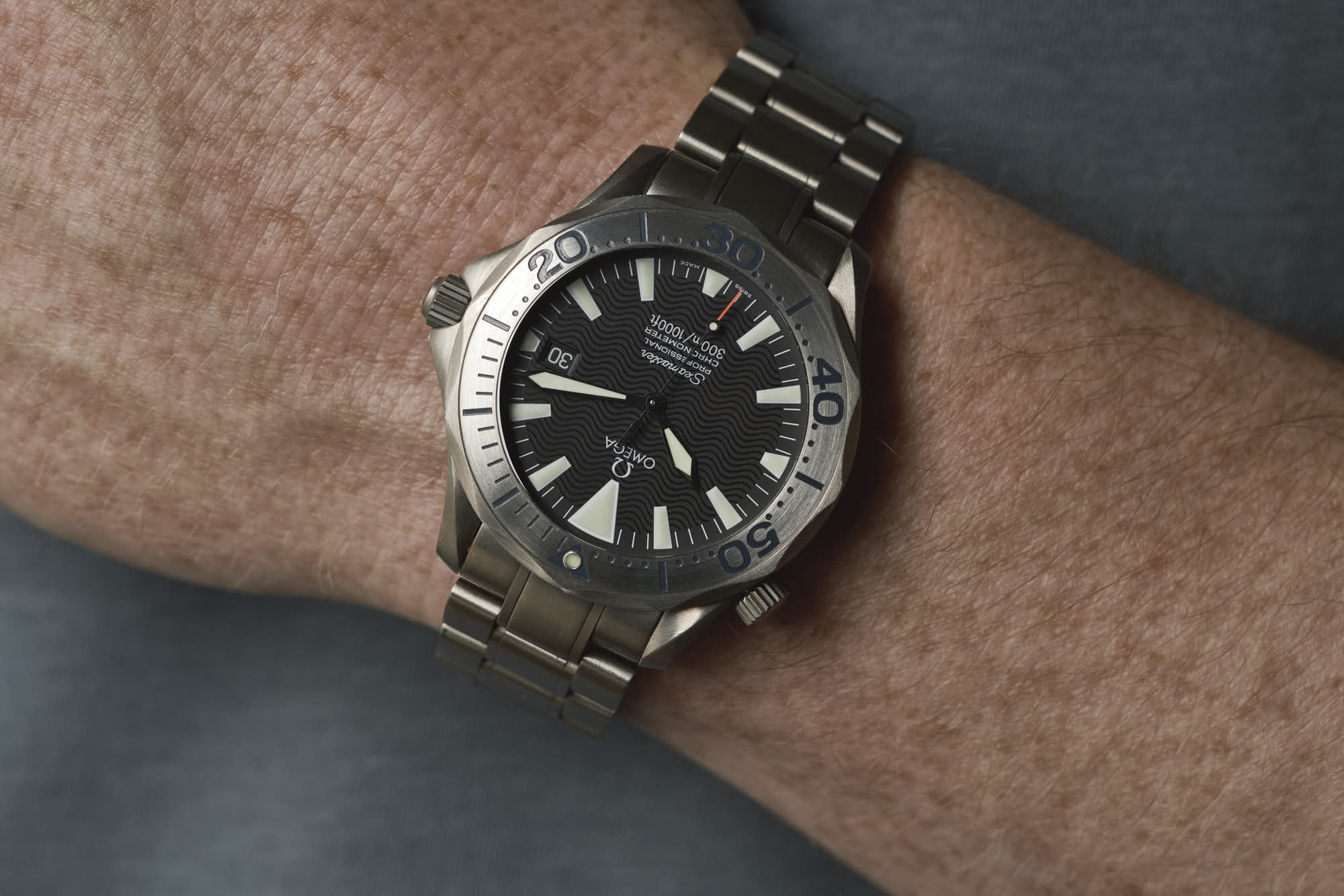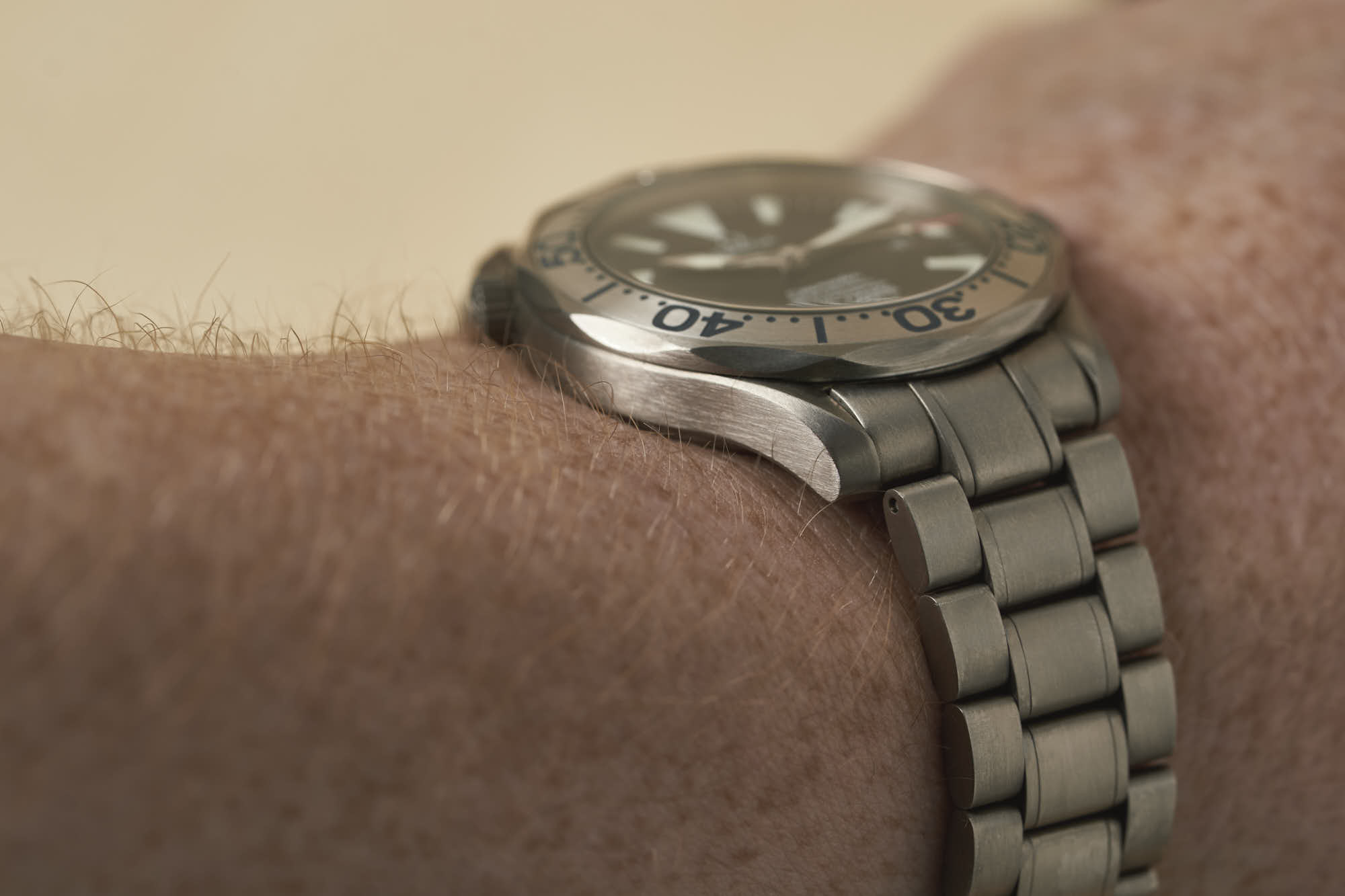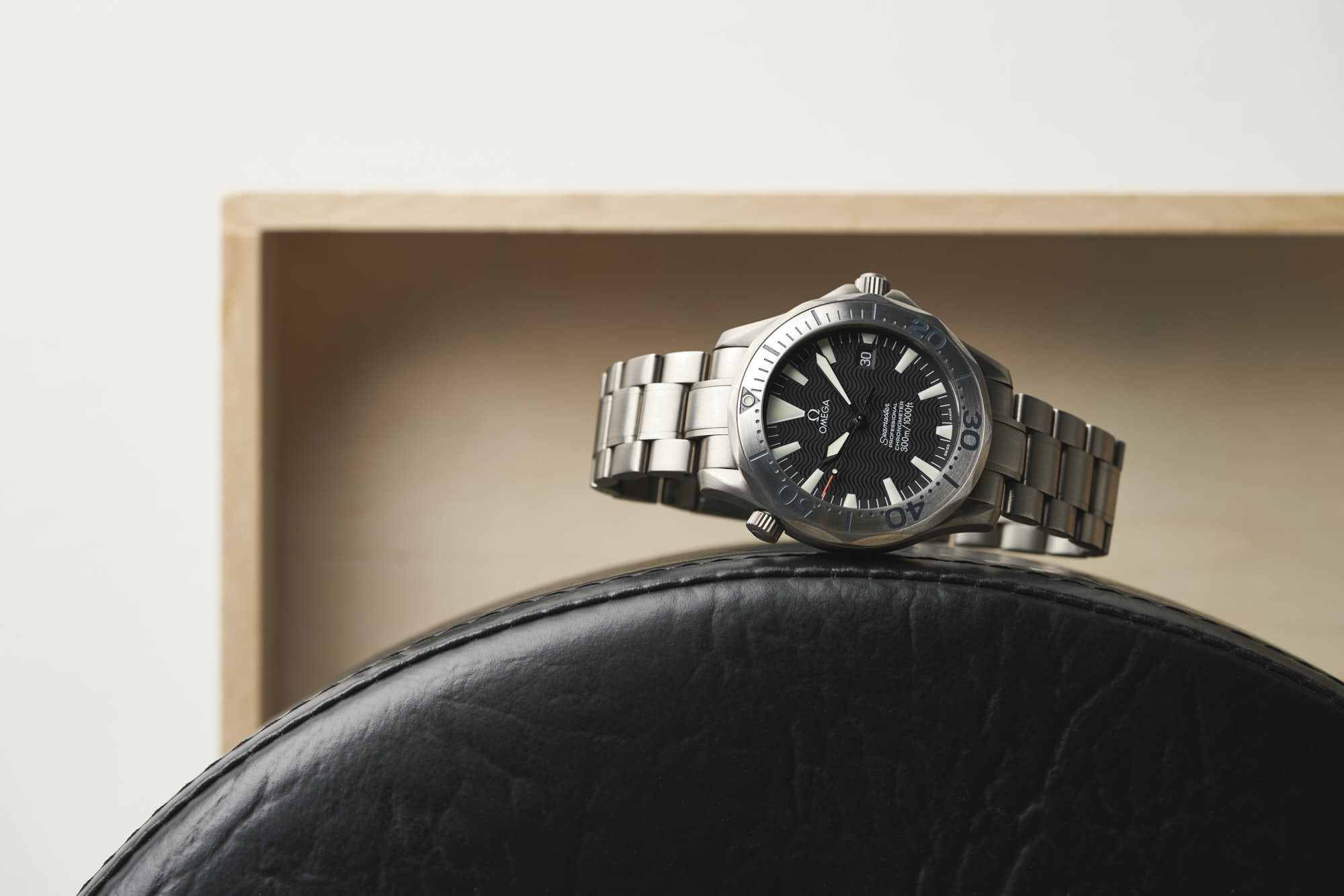The Omega Seamaster has a rich and complex history that encompasses a broad range of styles over the generations. Odds are strong that each of us conjures a slightly different image upon hearing the word Seamaster, from the Bond examples of the ‘90s, to the PloProf of the ‘60s, or even the quaint, near formal examples from the ‘40s. That breadth is reflected in the modern Seamaster collection, which currently encompasses the Aqua Terra, the Diver 300, the Planet Ocean, and a range of Heritage models that include the likes of the Railmaster and the PloProf. This diversity of options has meant plenty of great references have come and gone, and a few may have even slipped through the cracks through no fault of their own. This Missed Review will focus on one such reference, the titanium Seamaster 300 2231.50.00 from the early ‘00s.
The modern Seamaster 300 picks the story up in 1993, sporting the word ‘professional’ on its dial and a helium release appendage at 10 o’clock. The new watch was about to get the boost of a lifetime thanks to a placement on the wrist of Pierce Brosnan in his portrayal of fictional British spy, James Bond in the 1995 film GoldenEye. It is this reference, the steel 2541.80.00 with quartz movement that generally pops into my head when I think about the Seamaster. It’s not a watch I find particularly attractive, but it is one that I associate with a specific era perhaps more than any other watch. There is something truly unique about this generation of the Seamaster, which doesn’t adhere to the design codes we typically associate with the dive watch genre, all while building on one of the all-time great vintage dive watches from an earlier era of the Seamaster.









 Featured Videos
Featured Videos




